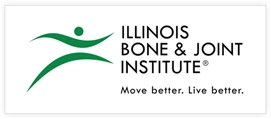PCL Tear
The posterior cruciate ligament (PCL) is one of the four major knee ligaments located in the back of the knee. Posterior cruciate ligament tears are a relatively uncommon injury. PCL tears may be partial or complete. A partial tear means that the ligament is not completely torn, while a complete tear means that it has been torn in two pieces.
PCL tears can be severe injuries with devastating long-term effects. Men ages 28-34 are most affected. PCL injuries are traumatic knee injuries that may lead to posterior knee instability. Isolated PCL tears are rare. Most PCL tears occur in combination with other knee ligament injuries including injuries to the anterior cruciate ligament and the posterolateral corner.
It takes a high-velocity force to tear the PCL such as a car accident where a bent knee is forced into the dashboard, or a sports injury. A PCL tear may occur when the knee is bent backward, such as in a football tackle, or when it is hyperextended. However, the PCL can be injured with low-velocity knee dislocations during daily activities; these injuries typically affect obese individuals.
The most common symptom of a PCL tear is pain in the back of the knee. Other symptoms include swelling, stiffness, bruising, difficulty walking, and instability of the knee.
Dr. Patel will conduct a thorough diagnostic workup including reviewing your medical history, how the injury occurred, your symptoms, and your level of activities including sports and daily life. He will perform an orthopaedic knee exam, and order imaging studies including x-rays to evaluate the bones, and an MRI to evaluate the soft tissues.
Treatment options depend on the type and severity of tear and whether other knee structures are also injured.
Nonoperative treatment may be indicated for isolated partial and complete isolated tears. This will include rest, ice, compression, elevation, immobilization, protected weight bearing and physical therapy to strengthen the quadriceps muscles. Return to sports may be permitted in 6-12 weeks. If instability or pain persists, operative management of isolated PCL injuries improves stability and reduces the risk of post-traumatic osteoarthritis.
When a PCL injury is combined with other ligament injuries or when the ligament is torn off the bone and tears off a piece of bone, called an avulsion fracture, surgery is almost always indicated.
The goal of surgery for a PCL tear is to restore the normal function and stability of the knee joint. There are several different surgical procedures that can be used to repair a PCL tear, and the type of surgery that is best for you will depend on the specific characteristics of your injury.
Dr. Patel performs a double-bundle PCL reconstruction which is the most anatomic method to restore the PCL and optimize post-surgical function. A standard PCL reconstruction involves one graft, whereas a double-bundle PCL reconstruction involves two grafts and restores normal anatomy of the PCL. Dr. Patel is one of the few surgeons in the region trained to perform double-bundle PCL reconstructions.
PCL repair of a bony avulsion fracture, and single or multiligament reconstruction is essential to reestablish knee stability. Arthroscopic reconstruction of the ligament(s) with tissue grafts from the patient or a donor is usually necessary.
Recovery from ligament reconstruction surgery generally occurs in two phases. The first phase lasts approximately 6 weeks and focuses on protecting the graft while it heals. During this time, you will likely use crutches to keep weight off your leg. You will also have a knee brace to stabilize your knee.
The second phase of recovery involves rehabilitation and can last up to 6 months. This phase focuses on regaining full range of motion and strength in your knee.
The goal of rehabilitation is to regain full function of the knee joint so that the patient can return to their previous level of activity. It is critical that you follow Dr. Patel’s instructions during both phases of recovery to ensure a successful outcome. Most patients are able to return to sports and other activities within 6-12 months after surgery.
Dr. Ronak M. Patel is a double board-certified orthopaedic surgeon and sports medicine physician. He completed his bachelor’s degree, medical degree, and residency training at Northwestern University. He, then completed his fellowship training at the Cleveland Clinic. He specializes in the treatment of complex knee, shoulder and elbow injuries and degenerative conditions. Contact him to schedule a consultation to learn more about how he can help you return to the life you love and the activities that make life worth living. He serves teens and adults in Chicagoland and NW Indiana.
At a Glance
Ronak M. Patel M.D.
- Double Board-Certified, Fellowship-Trained Orthopaedic Surgeon
- Past Team Physician to the Cavaliers (NBA), Browns (NFL) and Guardians (MLB)
- Published over 49 publications and 10 book chapters
- Learn more

